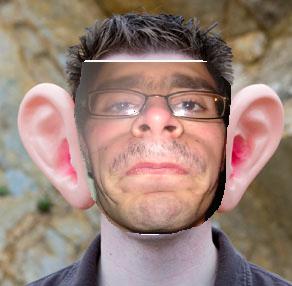Otitis media
Definition
Acute inflammation of the middle ear cavity.
Epidemiology
![]() Acute otitis media is the commonest condition in children. It peaks between 3-6 years of age and is usually bilateral.
Acute otitis media is the commonest condition in children. It peaks between 3-6 years of age and is usually bilateral.
Pathophysiology
The most common causes are strep. pneumoniae, h. influenzae and moraxella catarrhalis. Group A streptococcus is sometimes the causative agent. Viruses are rare but the ones implicated are RSV, parainfluenzae, influenza, rhinovirus and enterovirus.
The infection has to include all of the middle ear, including the tympanic cavity (which is the bit leading to), the Eustachian tube, and the mastoid antrum and air cells (which are found superior to the middle ear. The Eustachian tube is closed off and prevents aeration and drainage, result in the eardrum bulging.
Risk Factors
If you have an upper respiratory tract infection, even a viral one, it predisposes you to developing bacterial otitis media. Which is annoying. Also, being a kid between 3-6 years presidisposes you as well.
Clinical Features
- Ear features are: ear pain, ear rubbing (particularly in young kids).
- Eardrum features are: cloudy eardrum, bulging eardrum, distinctly immobile eardrum, distinctly red eardrum.
- Hearing features are: conductive deafness, tinnitus, Finally discharge from ear (otorrhoea) usually starts profuse and mucoid turns thick and yellow with time. It may also be bloody. The discharge signifies perforation.
- General features are: excessive crying, fever >40oC,
Previous URTI is a factor.
Investigations
In serious cases, clever investigations which I don't understand (pneumatic otoscopy and tympanometry) are done. Generally, this is not investigated.
Management
Otitis media is classified into three categories for management: early, bulging and discharging.
Early otitis media
Antibiotics are not always necessary. If they are used, co-amoxiclav (amoxicillin and clavulanic acid) or erythromycin should be used. Analgesics i.e. paracetamol should be used.
Bulging otitis media
Essentially, if antibiotics fail, a myringectomy should be performed. This consists of making an incision in the tympanic membrane to release fluid build-up behind the ear. The problems of this include: transient and persisten otorrhoea; tympanosclerosis (harderning of the ear drum); choleastoma (squamous epithelium in the middle ear).
Discharging otitis media
This is nature's own myringectomy and antiobiotics based on a swab and culture should be given.
Prognosis
Most spontaneously resolve with 7-14 days. Can develop into recurrent otitis media which is annoying.
